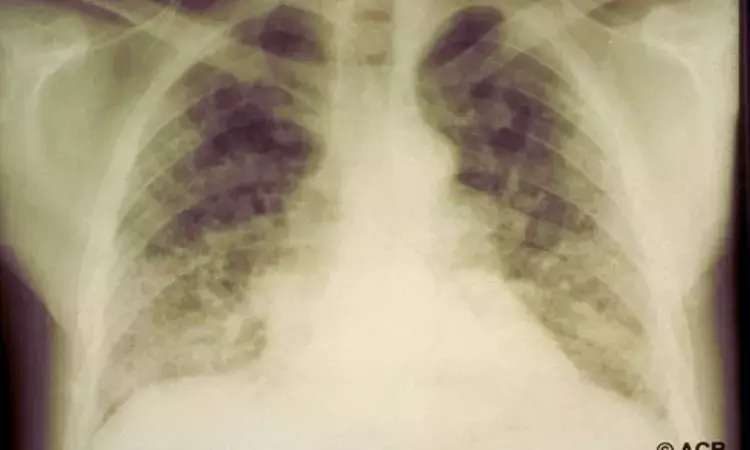- Home
- Medical news & Guidelines
- Anesthesiology
- Cardiology and CTVS
- Critical Care
- Dentistry
- Dermatology
- Diabetes and Endocrinology
- ENT
- Gastroenterology
- Medicine
- Nephrology
- Neurology
- Obstretics-Gynaecology
- Oncology
- Ophthalmology
- Orthopaedics
- Pediatrics-Neonatology
- Psychiatry
- Pulmonology
- Radiology
- Surgery
- Urology
- Laboratory Medicine
- Diet
- Nursing
- Paramedical
- Physiotherapy
- Health news
- Fact Check
- Bone Health Fact Check
- Brain Health Fact Check
- Cancer Related Fact Check
- Child Care Fact Check
- Dental and oral health fact check
- Diabetes and metabolic health fact check
- Diet and Nutrition Fact Check
- Eye and ENT Care Fact Check
- Fitness fact check
- Gut health fact check
- Heart health fact check
- Kidney health fact check
- Medical education fact check
- Men's health fact check
- Respiratory fact check
- Skin and hair care fact check
- Vaccine and Immunization fact check
- Women's health fact check
- AYUSH
- State News
- Andaman and Nicobar Islands
- Andhra Pradesh
- Arunachal Pradesh
- Assam
- Bihar
- Chandigarh
- Chattisgarh
- Dadra and Nagar Haveli
- Daman and Diu
- Delhi
- Goa
- Gujarat
- Haryana
- Himachal Pradesh
- Jammu & Kashmir
- Jharkhand
- Karnataka
- Kerala
- Ladakh
- Lakshadweep
- Madhya Pradesh
- Maharashtra
- Manipur
- Meghalaya
- Mizoram
- Nagaland
- Odisha
- Puducherry
- Punjab
- Rajasthan
- Sikkim
- Tamil Nadu
- Telangana
- Tripura
- Uttar Pradesh
- Uttrakhand
- West Bengal
- Medical Education
- Industry
Advancements in detecting interstitial lung disease in rheumatoid arthritis: Thoracic ultrasound takes the lead

Denmark: Systematic screening for respiratory symptoms combined with thoracic ultrasound (TUS) can reduce the diagnostic delay of interstitial lung disease (ILD) in rheumatoid arthritis (RA), a recent study published in Arthritis Care & Research has shown.
"To our knowledge, this prospective study is the first to use respiratory symptoms in rheumatoid arthritis as inclusion criteria," the researchers wrote. TUS offers several advantages, including its non-invasive nature, absence of radiation exposure, and cost-effectiveness.
Rheumatoid arthritis is a chronic autoimmune disorder primarily affecting the joints, but it can also have systemic manifestations, including ILD. Early detection of ILD in RA is crucial for timely intervention and management. Traditional diagnostic methods, such as chest X-rays and high-resolution computed tomography (HRCT), have limitations, including radiation exposure and cost. However, a recent study suggests that thoracic ultrasound could revolutionize the detection of ILD in RA patients.
Against the above background, Bjørk K. Sofíudóttir, PUlmo-RhEuma Frontline Center (PURE), Department of Rheumatology Odense University Hospital, Odense, Denmark, and colleagues aimed to determine the diagnostic accuracy of thoracic ultrasound for detecting interstitial lung disease in rheumatoid arthritis with respiratory symptoms.
For this purpose, the researchers systematically screened individuals with RA visiting Rheumatological outpatient clinics in the Region of Southern Denmark for cough, dyspnoea, recurrent pneumonia, prior severe pneumonia, or a chest X-ray indicating interstitial abnormalities. Eighty participants with a positive screening were consecutively included.
Individuals were not eligible if they had a chest HRCT <12 months or were already diagnosed with ILD. A blinded TUS expert evaluated thoracic ultrasound, and TUS was registered as positive for ILD if ≥10 B-lines or bilateral thickened and fragmented pleura were present.
The study's primary outcomes were TUS's specificity, sensitivity, negative predictive value (NPV), and positive predictive value (PPV). HRCT was assessed by an ILD-specialised thoracic radiologist, followed by a multidisciplinary team discussion. The accepted window of HRCT was <30 days after TUS was performed.
The key findings of the study were as follows:
- 77 participants received HRCT <30 days after TUS, and 30% were diagnosed with ILD.
- TUS had a sensitivity of 82.6% and a specificity of 51.9%, corresponding to a PPV of 42.2% and an NPV of 87.5%.
In conclusion, this prospective study is the first to use respiratory symptoms in rheumatoid arthritis as inclusion criteria. Systematic screening for respiratory symptoms combined with thoracic ultrasound can reduce the diagnostic delay of interstitial lung disease in rheumatoid arthritis.
Reference:
Sofíudóttir, B. K., Harders, S., Laursen, C. B., Lage-Hansen, P. R., Nielsen, S. M., Just, S. A., Christensen, R., Davidsen, J. R., & Ellingsen, T. Detection of Interstitial Lung Disease in Rheumatoid Arthritis by Thoracic Ultrasound. A Diagnostic Test Accuracy study. Arthritis Care & Research. https://doi.org/10.1002/acr.25351
Dr Kamal Kant Kohli-MBBS, DTCD- a chest specialist with more than 30 years of practice and a flair for writing clinical articles, Dr Kamal Kant Kohli joined Medical Dialogues as a Chief Editor of Medical News. Besides writing articles, as an editor, he proofreads and verifies all the medical content published on Medical Dialogues including those coming from journals, studies,medical conferences,guidelines etc. Email: drkohli@medicaldialogues.in. Contact no. 011-43720751


